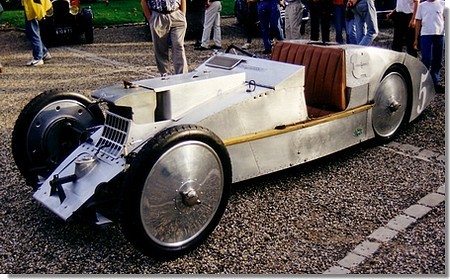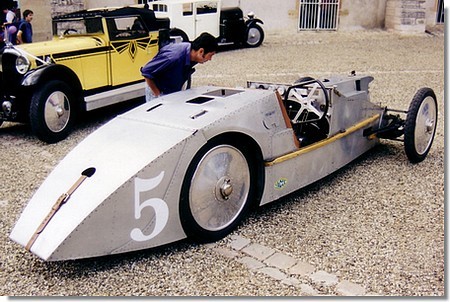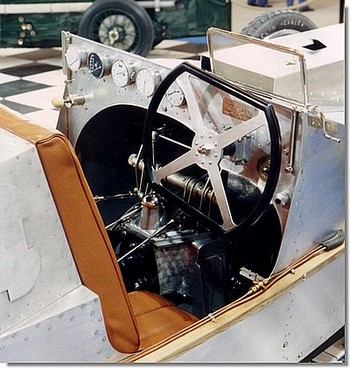C6 (1923 & 1992)
|
|
|
C6 (1923 & 1992)
|
| The imaginative interpretation of the race regulations that had helped Gabriel Voisin secure such a convincing victory in the touring car class of the 1922 French Grand Prix met with such official disapproval that a rule imposing a minimum frontal area was introduced for the following year. | |
|
Understandably feeling targeted by this intervention, Voisin,
in a public declaration of his contempt for the new ruling, promptly announced
his intention to contest the 1923 event in the racing car class. |
 |
 |
Voisin asked André Lefebvre to design an ultra-light and aerodynamically efficient machine to compensate for the new engine's modest power output. Whether because of time constraints or the recklessness of the endeavour, the result was truly extraordinary. The Laboratoire, as it became known, was a machine far ahead of its time. Arguably the first true monocoque chassis, it was constructed from aluminium panels over an ash frame, the underside completely flat, with the profile of an aerofoil section. The narrowness of the rear track (initially 50cm, which proved too unstable, later widened to 75mm) allowed weight to be saved by dispensing with a differential. |
|
Mustering some 75 horses, the 2-litre
unit underwent trials during which high speed cooling problems were
resolved by adding an external airscrew to drive the water pump without
sapping engine power. Propelled by the air, it came into play at speeds
over 50kph.
Notable too was the curiously shaped steering wheel, which allowed unobstructed visibility as well as facilitating driver access. The C6 Laboratoire failed to shine, its many technological innovations unable to compensate for the sheer lack of power in the face of stiff competition of the best racing cars of the time (including Bugatti's unconventionally bodied Type 32 'Tank'). Unsurprisingly in view of the lack of development due to the tight timescale involved, reliability issues also surfaced. Only one of the four-car team survived the race, André Lefebvre bringing car No.10 into 5th place at an average of 63.2 mph. The factory C6 'Laboratoire' was never seen in competition again except for one appearance at Monza later in the year, although a tiny handful of cars were sold to privateers to contest local speed events. Lefebvre also campaigned a one-off version of the C6 powered by the heavy 4-litre C5 engine at a few hillclimbs. |
 |
|
The cockpit with its unusual steering-wheel
|
|
| A meticulous recreation of the C6 was built in 1992 to commemorate
the 80th anniversary of the Tours race, and has been widely displayed at
old car events throughout the world ever since. With its strikingly modern concept, the C6 Laboratoire continues to astonish, making its faster and more competitive contemporaries seem banal by comparison. |
|
 1994 : on Montlhéry track. |
|
|
|